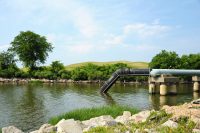What’s a ‘Green Job’ and How Can I Get One?
BLS and Green Jobs The BLS green jobs definition contains 2 components. Green jobs are either: Jobs in businesses that produce goods or provide services that benefit the environment or conserve natural resources; or Jobs in which workers’ duties involve making their establishment’s production processes more environmentally friendly or use fewer natural resources. Green Goods […]










